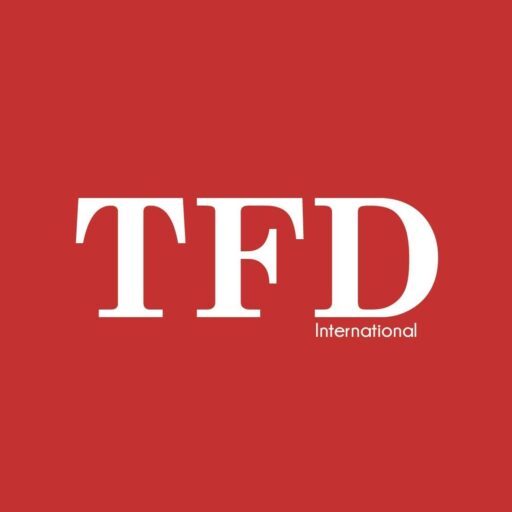KARACHI: In a gesture underscoring deep-rooted friendship and unwavering strategic partnership, China has once again extended a helping hand to Pakistan, agreeing to reschedule $1.8 billion in concessional and preferential buyer credit loans. This financial accommodation, spread across two years from July 2025 to June 2027, is more than just debt relief-it is a powerful signal to the world: Pakistan is not alone, and its path towards economic stability and reform is being backed by trusted global partners.
Amid growing global economic headwinds and stringent International Monetary Fund (IMF) benchmarks, China’s move is timely and strategic. The rescheduling allows Pakistan some critical breathing space in managing its foreign debt obligations, especially with nearly $20 billion in external repayments looming next fiscal year. It reflects not only the confidence China holds in Pakistan’s economic restructuring but also the geo-economic alignment between the two countries.
This step – though half of the initially requested $3.4 billion restructuring – plays a vital role in averting short-term default risks. Importantly, while the rescheduled loans exclude buyer’s credit, they remain focused on critical infrastructure and development financing, central to Pakistan’s growth agenda.
The current economic indicators reveal a country navigating turbulent waters with resilience. Following the repayment of a $2.1 billion Chinese loan, Pakistan’s foreign exchange reserves had briefly dipped below $10 billion. However, with the latest refinancing arrangements-including the expected return of the Chinese loans and $1 billion in support from the Asian Development Bank (ADB) – reserves are expected to rise to a healthier $14 billion by the end of June 2025.
Finance Minister Muhammad Aurangzeb has projected this reserve buffer confidently, aligning with Pakistan’s IMF-endorsed economic roadmap. The strategic management of debt and forex inflows is aimed at maintaining macroeconomic stability and investor confidence.
China’s backing has always been more than transactional. From CPEC to emergency economic support, the friendship has shown its weight in gold. During recent negotiations, the Exim Bank of China recommended excluding buyer’s credit from the rescheduling proposal, and while this meant narrowing the relief package, Pakistan’s Ministry of Finance agreed-highlighting diplomatic prudence and urgency to conclude the agreement.
Pakistan’s consistent diplomatic engagements – from Deputy Prime Minister Ishaq Dar’s Beijing visit to continued negotiations at technical levels – indicate how seriously Islamabad treats its bilateral economic relationships. This debt rescheduling is now the second instance in two years that China has extended financial flexibility to Pakistan. In 2023, a $2.43 billion debt package involving 31 separate loans was successfully rescheduled.
This continuity not only demonstrates China’s confidence in Pakistan’s commitment to economic reforms but also reflects Islamabad’s growing credibility on the global stage. The IMF programme – underpinned by difficult structural reforms and foreign financing benchmarks – demands consistent support. China, through this latest step, has once again proven to be the stabilising partner Pakistan can count on.
Alongside China’s role, other multilateral institutions have stepped up. The ADB recently approved a $350 million package for women-inclusive finance in Pakistan, expected to benefit over 2 million women entrepreneurs. It signals a broader effort by the government to not just stabilise but transform the economy by fostering inclusion and empowerment.
Furthermore, the World Bank has announced $194 million in support for education and water security in Balochistan – two sectors central to long-term sustainable development. These projects will impact over 500,000 people, boosting climate resilience, educational access, and water productivity. Such sectoral investments go hand-in-hand with the macroeconomic support Pakistan is receiving and reinforce the international community’s vote of confidence in Pakistan’s economic direction.
The Ministry of Finance, despite occasional challenges in official communication, continues to oversee a recalibration of fiscal priorities in alignment with IMF objectives. The IMF’s $7 billion deal, which outlines a $5 billion external financing gap, relies heavily on bilateral and multilateral partners stepping forward – precisely what is now being observed.
Pakistan is also expecting rollover of nearly $13 billion in bilateral deposits in the coming fiscal year – another key component of IMF compliance. This includes not just China but also other trusted partners in the Gulf region and beyond, who have signalled continuity in their support.
Yet, this progress is not without its challenges. Despite consistent efforts, China has refused to reschedule the buyer’s credit loans,citing technical and policy constraints. However, this has not deterred Pakistan’s resolve. By continuing to honour interest payments and negotiate wisely, Islamabad maintains its reputation as a responsible debtor in the global system.
The momentum towards recovery and stability is gathering pace. The refinancing of $3.7 billion in Chinese commercial loans and the disbursement of a non-Chinese commercial facility backed by ADB by June 26th will further buttress Pakistan’s reserve position. Central Bank officials remain confident that gross reserves will close the fiscal year at $13.9 billion – a substantial improvement and a key metric of macroeconomic resilience.
In the broader geopolitical context, China’s consistent economic and strategic support to Pakistan comes at a time when adversaries, including India, are attempting to malign Pakistan’s credibility in global financial circles. However, the consistent engagement by top-tier institutions and strategic nations paints a different, more optimistic picture.
As Prime Minister Shehbaz Sharif’s government continues its drive for fiscal reform, social protection, and investment facilitation, these foreign economic partnerships – be it China’s lifeline, ADB’s inclusion agenda, or the World Bank’s development projects – serve as critical pillars. They showcase a nation in transition, moving steadily from crisis management to structural rebuilding.
Pakistan’s resolve to overcome economic hurdles is clear. It is not just about surviving debt cycles, but about reimagining the economy: inclusive, digitally-enabled, climate-resilient, and globally integrated. China’s support – again – has come not just as a cheque, but as an endorsement.
As the fiscal year comes to a close, the narrative is shifting. From a fragile economic state just months ago, Pakistan is slowly returning to stability, and with it, a growing international trust. In the words of many observers: where there’s China, there’s confidence-and for Pakistan, that confidence might just be the catalyst it needs to unlock a new era of prosperity.
The momentum towards recovery and stability is gathering pace. The refinancing of $3.7 billion in Chinese commercial loans and the disbursement of a non-Chinese commercial facility backed by ADB by June 26th will further buttress Pakistan’s reserve position. Central Bank officials remain confident that gross reserves will close the fiscal year at $13.9 billion – a substantial improvement and a key metric of macroeconomic resilience.
In the broader geopolitical context, China’s consistent economic and strategic support to Pakistan comes at a time when adversaries, including India, are attempting to malign Pakistan’s credibility in global financial circles. However, the consistent engagement by top-tier institutions and strategic nations paints a different, more optimistic picture.
As Prime Minister Shehbaz Sharif’s government continues its drive for fiscal reform, social protection, and investment facilitation, these foreign economic partnerships – be it China’s lifeline, ADB’s inclusion agenda, or the World Bank’s development projects – serve as critical pillars. They showcase a nation in transition, moving steadily from crisis management to structural rebuilding.
Pakistan’s resolve to overcome economic hurdles is clear. It is not just about surviving debt cycles, but about reimagining the economy: inclusive, digitally-enabled, climate-resilient, and globally integrated. China’s support – again – has come not just as a cheque, but as an endorsement.
As the fiscal year comes to a close, the narrative is shifting. From a fragile economic state just months ago, Pakistan is slowly returning to stability, and with it, a growing international trust. In the words of many observers: where there’s China, there’s confidence-and for Pakistan, that confidence might just be the catalyst it needs to unlock a new era of prosperity.





